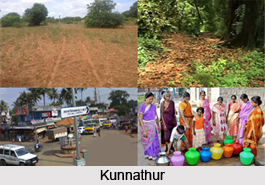 Kunnathur is the name of a panchayat town and it is situated in Erode District of Tamil Nadu state.
Kunnathur is the name of a panchayat town and it is situated in Erode District of Tamil Nadu state.
Location of Kunnathur
Kunnathur lies at a distance of nineteen kilometers from Tirupur, fifty eight Kilometres from Coimbatore. It is also positioned twenty-four Kilometres from Chennimalai.
Geography of Kunnathur
Kunnathur is stretching over a region of 7 sq kilometres; several important towns have developed lying adjacent to this Kunnathur town. Instances can also be cited. In the south eastern part, Vijayapuri is situated almost ten kilometres, in the northern part lies Kolappalur in the north; Perundurai is located in the east. Also in the south-western part Avinashi is located and Nanbiyur lies in the north-western part.
Population of Kunnathur
According to the Population Census in the year 2011, the total population of Kunnathur is enumerated to be 7031. From it, one can even decipher the condition of males, females and also that of children. It is to be highlighted that in Kunnathur both males and females are in equal proportion. In Kunnathur, children below six years of age constitutes of 9 percent of the population.
Education of Kunnathur
The average literacy rate of Kunnathur is 72, which is higher than that of the entire nation. 59.5 percent is the average literacy rate of the Indian subcontinent. In this regard it can be said that the Kunnathur is more or less developed. Not only that one can even decipher knowledge about male and female literacy rates of Kunnathur and that too on individual basis. Thus the male literacy rate constitutes of 80 percent. Following the trend of many places, female literacy rate in Kunnathur too is less than that of males. Rate of female literacy constitutes of 64 percent only.
Tourism of Kunnathur
Kunnathur has many places of interests which enhance the tourist quotient. In the middle of the town one can easily come across three beautiful temples of ancient Hindu region. These temples are the centre of attractions.
Visiting Information
In Kunnathur good transportation has facilitated its connectivity with all the other places of the region. Rails, roadways and also airports meet the demands of all the localities. C A Coimbatore Airport and also Ingur Railway Station lie in the closest proximity. In fact from other places like Gobichettipalayam and Tirupur one can easily reach here via roads.



















